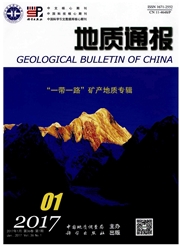

 中文摘要:
中文摘要:
新的地层和古生物学研究结果表明,措勤盆地在晚古生代一早中生代不存在长达75Ma以上的沉积间断.其中,晚二叠世-晚三叠世诺利期都是海相碳酸盐岩地层,晚三叠世瑞替期-早中侏罗世为陆缘碎屑岩地层.两者之间为角度不整合接触.措勤盆地在晚二叠世-晚三叠世诺利期一直处于海相碳酸盐岩盆地中.晚三叠世瑞替期-早中侏罗世仍然是接受巨厚沉积的低洼地区。从宏观的油气勘探的战略评价角度看.措勤盆地在中二叠世栖霞期-晚三叠世诺利期的海相碳酸盐岩地层具有生油层的性质,上三叠统瑞替阶-中下侏罗统具有盖层的性质,两者之间的角度不整合具有储集层的性质。措勤盆地中二叠统-下侏罗统构成一个油气的有利勘探层系.称为古格层系。
 英文摘要:
英文摘要:
The latest stratigraphic and paleontological studies indicate that in the Coqen basin there was no 〉75 Ma sedimentary hiatus during the Late Paleozoic-Early Mesozoic. Among the deposits, marine carbonate rocks were deposited during the Late Permian to Late Triassic Norian and continental-margin clastic rocks were deposited during the Late Triassic Rhetian to Early-Middle Jurassic. They are in unconformable contact. The Coqen basin was a marine carbonate basin during the Late Permian to Late Triassic Norian and still a low-lying area that received very thick deposits during the Late Triassic Rhetian to Early-Middle Jurassic. In the context of the strategic evaluation of macroscopic petroleum exploration, the Middle Permian Qixiaan to Late Triassic Norian carbonate rocks in the basin have the properties of source rocks and the Late Triassic Rhetian to Early-Mid Jurassic clastic rocks have the properties of cover rocks; the unconformity between them has the properties of reservoir rocks. The Middle Permian-Lower Jurassic in the Coqen basin form a favorable sequence for petroleum exploration, which is named the Guge sequence.
 同期刊论文项目
同期刊论文项目
 同项目期刊论文
同项目期刊论文
 期刊信息
期刊信息
